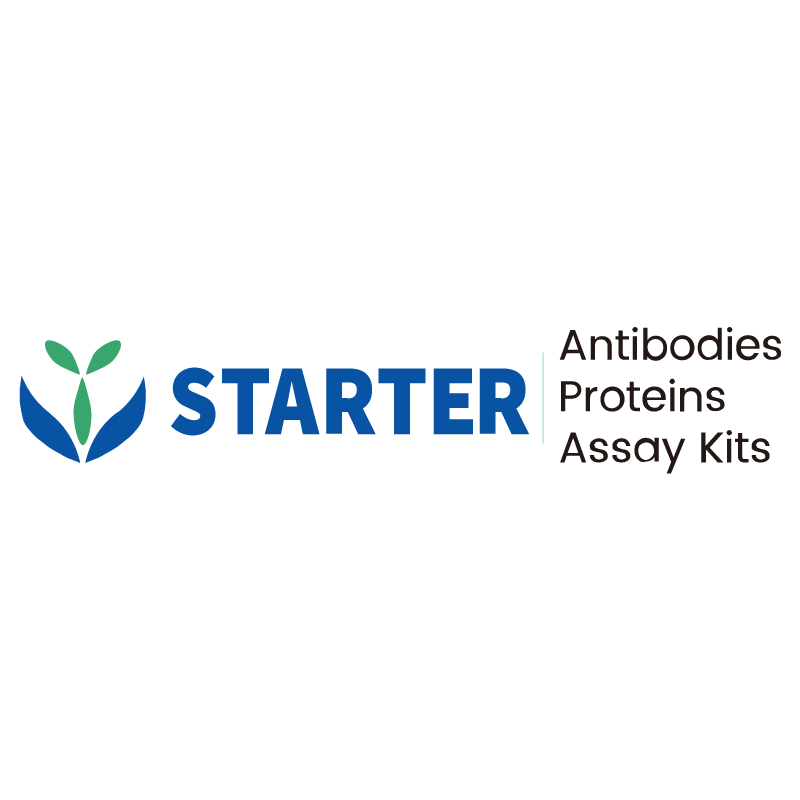WB result of Lipocalin-2/NGAL Recombinant Rabbit mAb
Primary antibody: Lipocalin-2/NGAL Recombinant Rabbit mAb at 1/1000 dilution
Lane 1: mouse heart lysate 20 µg
Lane 2: mouse brain lysate 20 µg
Lane 3: mouse spleen lysate 20 µg
Lane 4: mouse bone marrow lysate 20 µg
Lane 5: mouse lung lysate 20 µg
Negative control: mouse heart lysate; mouse brain lysate
Secondary antibody: Goat Anti-rabbit IgG, (H+L), HRP conjugated at 1/10000 dilution
Predicted MW: 23 kDa
Observed MW: 28 kDa
Product Details
Product Details
Product Specification
| Host | Rabbit |
| Antigen | Lipocalin-2/NGAL |
| Synonyms | Neutrophil gelatinase-associated lipocalin; Lipocalin-2; Oncogene 24p3 (24p3); SV-40-induced 24p3 protein; Siderocalin LCN2; p25; Lcn2 |
| Immunogen | Synthetic Peptide |
| Location | Secreted |
| Accession | P11672 |
| Clone Number | S-2280-129 |
| Antibody Type | Recombinant mAb |
| Isotype | IgG |
| Application | WB, IHC-P |
| Reactivity | Ms, Rt |
| Positive Sample | mouse spleen, mouse bone marrow, mouse lung, rat spleen ,rat liver |
| Purification | Protein A |
| Concentration | 0.5 mg/ml |
| Conjugation | Unconjugated |
| Physical Appearance | Liquid |
| Storage Buffer | PBS, 40% Glycerol, 0.05% BSA, 0.03% Proclin 300 |
| Stability & Storage | 12 months from date of receipt / reconstitution, -20 °C as supplied |
Dilution
| application | dilution | species |
| WB | 1:1000 | Ms, Rt |
| IHC-P | 1:2000 | Ms, Rt |
Background
Lipocalin-2/NGAL is a 25-kDa secreted glycoprotein of the lipocalin superfamily that forms an 8-stranded β-barrel calyx able to bind and transport ferric siderophore complexes, thereby acting as a bacteriostatic innate immune factor that starves bacteria of iron while simultaneously delivering iron to mammalian cells via the megalin/24p3R receptor, and is rapidly induced by inflammatory, hypoxic or nephrotoxic stress in neutrophils, macrophages and epithelia, circulates as monomer, homodimer or MMP-9–linked heterodimer, functions as a sensitive biomarker of acute and chronic kidney injury, modulates cell survival, differentiation, epithelial-to-mesenchymal transition and oncogenesis, and is transcriptionally up-regulated through NF-κB, ERK and JAK-STAT pathways in metabolic disorders such as obesity and insulin resistance.
Picture
Picture
Western Blot
WB result of Lipocalin-2/NGAL Recombinant Rabbit mAb
Primary antibody: Lipocalin-2/NGAL Recombinant Rabbit mAb at 1/1000 dilution
Lane 1: rat heart lysate 20 µg
Lane 2: rat spleen lysate 20 µg
Lane 3: rat lung lysate 20 µg
Negative control: rat heart lysate
Secondary antibody: Goat Anti-rabbit IgG, (H+L), HRP conjugated at 1/10000 dilution
Predicted MW: 23 kDa
Observed MW: 28 kDa
Immunohistochemistry
IHC shows positive staining in paraffin-embedded mouse spleen. Anti-Lipocalin-2/NGAL antibody was used at 1/2000 dilution, followed by a HRP Polymer for Mouse & Rabbit IgG (ready to use). Counterstained with hematoxylin. Heat mediated antigen retrieval with Tris/EDTA buffer pH9.0 was performed before commencing with IHC staining protocol.
IHC shows positive staining in paraffin-embedded mouse lung. Anti-Lipocalin-2/NGAL antibody was used at 1/2000 dilution, followed by a HRP Polymer for Mouse & Rabbit IgG (ready to use). Counterstained with hematoxylin. Heat mediated antigen retrieval with Tris/EDTA buffer pH9.0 was performed before commencing with IHC staining protocol.
IHC shows positive staining in paraffin-embedded mouse liver. Anti-Lipocalin-2/NGAL antibody was used at 1/2000 dilution, followed by a HRP Polymer for Mouse & Rabbit IgG (ready to use). Counterstained with hematoxylin. Heat mediated antigen retrieval with Tris/EDTA buffer pH9.0 was performed before commencing with IHC staining protocol.
Negative control: IHC shows negative staining in paraffin-embedded mouse cerebral cortex. Anti-Lipocalin-2/NGAL antibody was used at 1/2000 dilution, followed by a HRP Polymer for Mouse & Rabbit IgG (ready to use). Counterstained with hematoxylin. Heat mediated antigen retrieval with Tris/EDTA buffer pH9.0 was performed before commencing with IHC staining protocol.
IHC shows positive staining in paraffin-embedded rat spleen. Anti-Lipocalin-2/NGAL antibody was used at 1/2000 dilution, followed by a HRP Polymer for Mouse & Rabbit IgG (ready to use). Counterstained with hematoxylin. Heat mediated antigen retrieval with Tris/EDTA buffer pH9.0 was performed before commencing with IHC staining protocol.
IHC shows positive staining in paraffin-embedded rat lung. Anti-Lipocalin-2/NGAL antibody was used at 1/2000 dilution, followed by a HRP Polymer for Mouse & Rabbit IgG (ready to use). Counterstained with hematoxylin. Heat mediated antigen retrieval with Tris/EDTA buffer pH9.0 was performed before commencing with IHC staining protocol.
IHC shows positive staining in paraffin-embedded rat liver. Anti-Lipocalin-2/NGAL antibody was used at 1/2000 dilution, followed by a HRP Polymer for Mouse & Rabbit IgG (ready to use). Counterstained with hematoxylin. Heat mediated antigen retrieval with Tris/EDTA buffer pH9.0 was performed before commencing with IHC staining protocol.
Negative control: IHC shows negative staining in paraffin-embedded rat cerebral cortex. Anti-Lipocalin-2/NGAL antibody was used at 1/2000 dilution, followed by a HRP Polymer for Mouse & Rabbit IgG (ready to use). Counterstained with hematoxylin. Heat mediated antigen retrieval with Tris/EDTA buffer pH9.0 was performed before commencing with IHC staining protocol.


